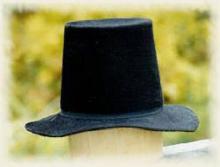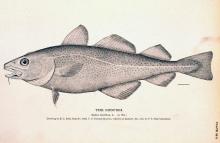European Explorers in Maine
By the late 15th century, Europeans were following the routes sailed centuries earlier by the Vikings and by BasqueBasque
People inhabiting parts of France and Spain, on the western edge of the Pyrenees, near the Bay of Biscay. whalers and fishermen. Some explorers searched for the Northwest PassageNorthwest Passage
A route to the Far East across North America, sought by early explorers. The search for this passage would drive exploration from the 15th century voyage of John Cabot through to the early 17th and then was taken up again in the late 1700s. to ChinaChina
During the period of the China Trade, when Mainers were sailing to ports in China, the Qing (or Ch'ing) Dynasty (1644-1911) was in power. The Qing Dynasty was established by the Manchus in northeastern China, and expanded to surrounding territories of Inner Asia, establishing the Empire of the Great Qing.
Read more. and the Spice IslandsSpice Islands
Popular name for the Molucca Islands in Indonesia, for some centuries the only economically important source of spices such as cloves, nutmeg and mace.. Some had heard tales of NorumbegaNorumbega
Name for a legendary City of Gold, thought to be near the site of present day Bangor. Name first appears on a map in 1529., a legendary city of gold near present-day Bangor. New England’s real wealth, however, lay in furs, fish, and trees.
Furs
The last quarter of the 16th century saw a rise in European-Native interaction because of a fashion craze in Europe—feltedFelt
Fibers that are matted together, not woven, by heat, moisture, and/or pressure. Felts are used in paper making, and felted beaver fur hats were popular in seventeenth and eighteenth century Europe, encouraging the North American fur trade. beaver fur hats became very popular. The fur trade brought many more Natives into contact with Europeans and their culture. An Indian-Basque pidginPidgin
A means of verbal communication developed by speakers of two different languages, who need to communicate for trade or business purposes. It usually contains vocabulary from one language and structure from another. developed for commercial use.
Native people near Castine, Machias, and Augusta provided furs to Europeans in return for iron and copper items—spearheads, arrowheads, guns, and ammunition. In Europe and Asia during part of the sixteenth and all of the seventeenth centuries, North American beaver pelts were in high demand for fashionable hats and other clothing. Note the images of beaver on this early Dutch map.
Fish
In the fifteenth century, as European fishermen ventured farther and farther west in pursuit of fish, they discovered plentiful supplies of cod and other fish that could meet Europe’s growing needs.
Penobscot Bay’s early fishermen dried their catch on islands. Captain John SmithSmith, Capt. John Captain John Smith
c.1580-1631. English soldier, sailor, and writer, who became the leader of the Jamestown Colony. Chiefly known in New England for his 1614 voyage in which he mapped much of the coast. He published the story of this voyage as "Description of New England" in 1616. It described the fishing, flora, fauna, inhabitants, and climate, and created the name "New England". This publication did much to promote New England as a destination. and his men fished from Monhegan in 1614, and Smith wrote highly complimentary descriptions of Maine. By 1622, Monhegan and Damariscove Islands had established fishing villages. Fish were Maine’s primary trade product until the mid-eighteenth century.
Trees
In 1609 Henry HudsonHudson, Henry Henry Hudson
c.1570-c.1611. English explorer and navigator. His three exploration voyages were attempts to find a Northwest passage to China. Hired by the Dutch East India Company in 1609, on his second voyage, in the Half Moon, he sailed down the Maine coast, stopping in Penobscot Bay and cutting some trees for masts.
Read more harvested a white pineWhite pine
A fast-growing pine tree with white wood and smooth gray bark. Often used for ships' masts in the past. tree from the Camden area for his ship Half Moon, anchored in Penobscot Bay. Hudson’s mast is believed to be the first taken from Maine.
The first cargo of masts was shipped to England from the Piscataqua River in 1634. Over the next few decades the British Navy grew desperate for mast trees, as their wars with the Dutch cut off their Baltic supply. Maine’s stands of massive white pine were officially claimed by the English in 1685, after King Charles II appointed Edward Randolph as Surveyor of Pines and TimberSurveyor of Pines and Timber
The British official who claimed New England\'s trees for the British king. White pines of appropriate size were marked with the "King's Broad Arrow" to warn others that these trees were claimed for use as masts for ships of the British Navy.. Trees of the right size were reserved for England and marked with the King's Broad ArrowKing's Broad Arrow
The mark put on white pine trees of certain dimensions appropriate for use as masts. The mark claimed the tree for the British Navy in the early days of settlement in New England..
As settlement increased in Maine throughout the seventeenth and eighteenth centuries, trees provided lumber for housing and boatbuilding. Maine’s abundance of rivers, streams, and tidal inlets provided water power for cutting wood. Dams built for sawmills were harmful to fish—and thus to Native food supply.
French and English
English and French explorers came to New England in the sixteenth and seventeenth centuries with different objectives, and formed different relationships with Native people. The French were less interested than the English in permanent settlement and agriculture. They utilized the skills of Indian guides to help them make maps and traded extensively for furs. From their bases in Nova Scotia the French sent Natives down the New England coast on fur trading trips. Many French Catholic priests and monks lived in Native villages. When conflicts arose, it was natural for the Indians to side with the French against the English, who had been gradually appropriating native lands.









